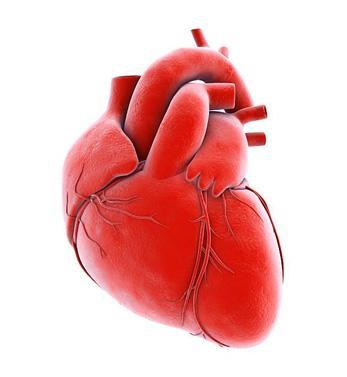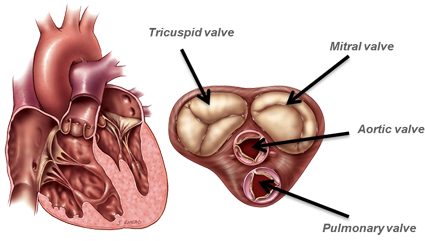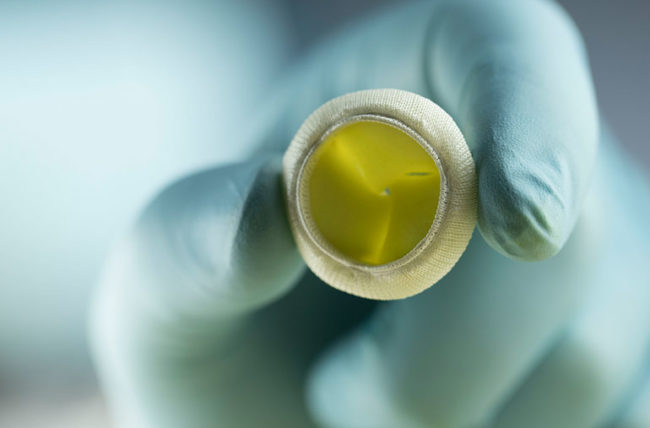





Heart valve diseases, which are common especially in Turkey and the nearby geography, threaten the quality of life of more and more people with each passing day, along with changing living conditions. Diseases developing due to heart valve can be life-threatening if preventive measures are not taken; Successful results can be obtained with correct diagnosis and appropriate treatment in the early period. With heart valve-related diseases, the repair or replacement of heart valves is called heart valve replacement surgery. With heart valve diseases, the load of the heart increases, the heart muscle is forced, and the functions of the heart deteriorate. For this reason, heart valve replacement or repair is directed.
 In which diseases is heart valve replacement surgery performed?
In which diseases is heart valve replacement surgery performed?
Stenosis or insufficiency detected in one or more of the heart valves: It is treated by repairing (plasty) or replacing (replacing) the valve. The heart is a powerful pump consisting of strong muscles, and it circulates the 5-7 liters of blood present in the body continuously throughout the body. This means pumping an average of 7,500 liters of blood per day. Heart valves are the formations that allow the flow to be in one direction in this system. There are four valves located between the heart chambers: aortic, mitral, tricuspid, and pulmonary. With a stenosis in the heart valves, the passage of blood becomes difficult, and in the case of heart valve failure, the back-flowing blood increases the load of the heart. In both cases, the heart muscle is forced and the chambers of the heart expand, causing the heart to enlarge. If it is not intervened, the normal functions of the heart are disrupted and heart failure occurs. The disease is most common in the mitral and aortic valves.
In general, surgical intervention may be required due to two types of diseases on the valves:
Stenosis: narrowing of the valve
Insufficient closure of the lid
Heart valve surgery is performed by a cardiovascular surgeon. The surgeon has to enter the heart open in order to reach the diseased valve with heart valve surgery. In this case, it is necessary to stop the heart by connecting the patient to a heart-lung machine. In these surgeries, the surgeon may replace the diseased valve with an artificial valve - this is called replacement - and primarily wants to repair, namely plasty, especially in the mitral and tricuspid valves. The most common cause of valve diseases in elderly people is the thickening of the heart valve, that is, the stenosis that occurs as a result of the inability of the heart valves to be opened sufficiently due to the thickening and calcification of the heart leaflets.
How is heart valve replacement or repair done?
In order for the heart to function as a pump normally, the valves must open fully and allow the forward flow of blood, and then close completely so that it does not leak back. If these valves leak back or do not allow the blood to pass easily, they will cause a load on the heart. Heart valves, each of which is a wonder of nature, sometimes cannot perform their mechanical functions due to certain diseases. In this case, the problem in the heart valves is solved by surgical treatment. The valves that need repair most often and with satisfactory results are those located between the atria and ventricles. The valve between the right atrium and the ventricle is called the "Tricuspid Valve", and the one on the left is called the "Mitral Valve". Heart valve diseases are most commonly treated with heart valve replacement surgery. In the operation, the patient's valve is removed and repaired, and a mechanical or biological valve is placed in its place.
However, not all types of heart valves can be repaired. In valve diseases caused by rheumatic diseases, repair possibilities are limited due to thickening and calcification due to the increase in connective tissue in the valve tissue. In addition, in some patients, very successful results are obtained in valve insufficiency caused by enlargement of the valve ring or sagging in a part of the valve, loosening of the heart valve, that is, prolapse, elongation. Mitral valve insufficiency can also occur as a result of a heart attack. After a heart attack or endocarditis, that is, heart infection, valve functions are impaired due to the rupture of one of the chordae holding the mitral valve or the thinning of the heart wall to which it is attached, that is, aneurysm. In these patients, valve repair is required in addition to coronary bypass operation.
The targeted durability period in valve repairs is 10 years and beyond. The structure and functions of the heart valves can be evaluated in detail with the "Transesophageal Echocardiography" device placed in the esophagus during and after the operation. In the meantime, the experience of the anesthesiologist and cardiologist who perform the echocardiographic examination, as well as the surgeon and his team, plays a major role. In this way, it is possible to confirm the success of the surgery before the patient leaves the surgery.

Heart valve prostheses have some weak points compared to the heart's own valves. Mechanical valve prostheses, also known as metal valves, require the use of drugs that reduce blood coagulation. If these drugs are not used, clot formation on the valve and this clot may break off and impair the circulation of some organs. For example, impaired cerebral circulation can cause a stroke. Bioprosthetic valves, also known as tissue valves, require a very short (3-6 months) drug use. However, the weak point of such covers is that they can be exposed to calcification and degeneration within a period of 10 years.
Another disadvantage of replacing the mitral or tricuspid valve with a prosthetic valve is that the muscles and fibers that attach these valves to the heart base are cut. The interruption of these muscles, which facilitates the opening and closing of the heart valve and also plays a role in the contraction of the heart, affects the performance of the heart. Therefore, if the repair of the heart valve is possible and it is thought to provide the physiological conditions for a long time, it is much better than replacing the valve.
After valve repair, a certain period of time is needed to cover the suture tips in the intracardiac region and the ring-shaped prosthesis called "Ring", which is placed to support the repair many times. This period varies between 3 and 6 months. In this period, anticoagulant drugs are used to prevent the formation of a clot on the prosthesis and the suture tips. In order to evaluate the effect of this drug, blood tests should be performed at the frequency determined by the cardiologist and at least once a month. Being able to perform INR examination with home devices that have been used in recent years has made the regulation of this capricious drug much easier. After this period is over, a cardiologist's examination and echocardiographic control once a year will be sufficient.